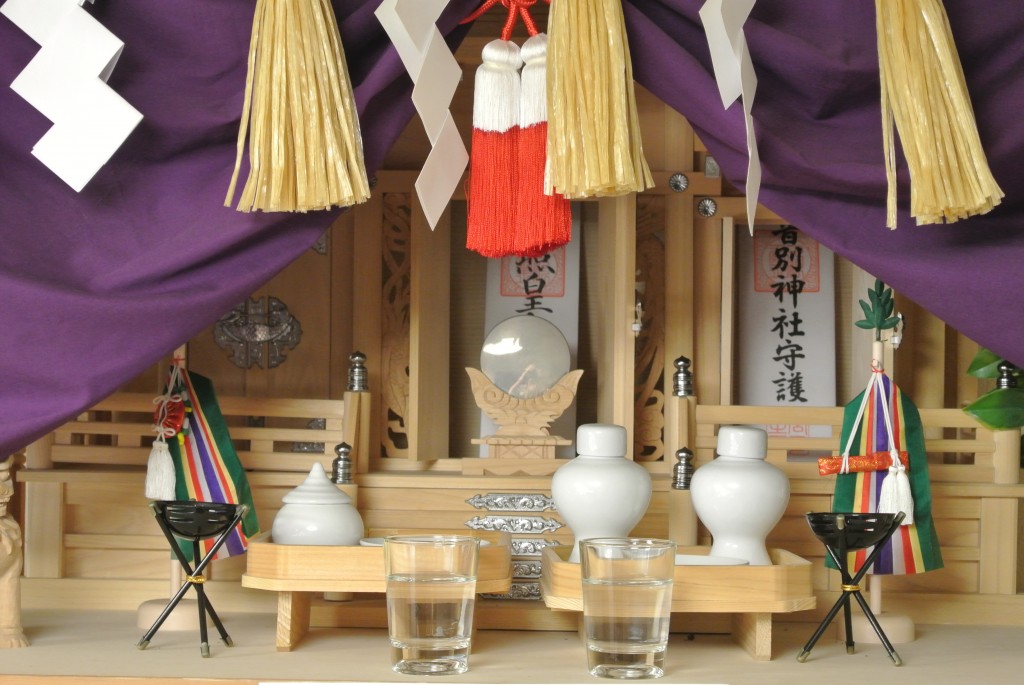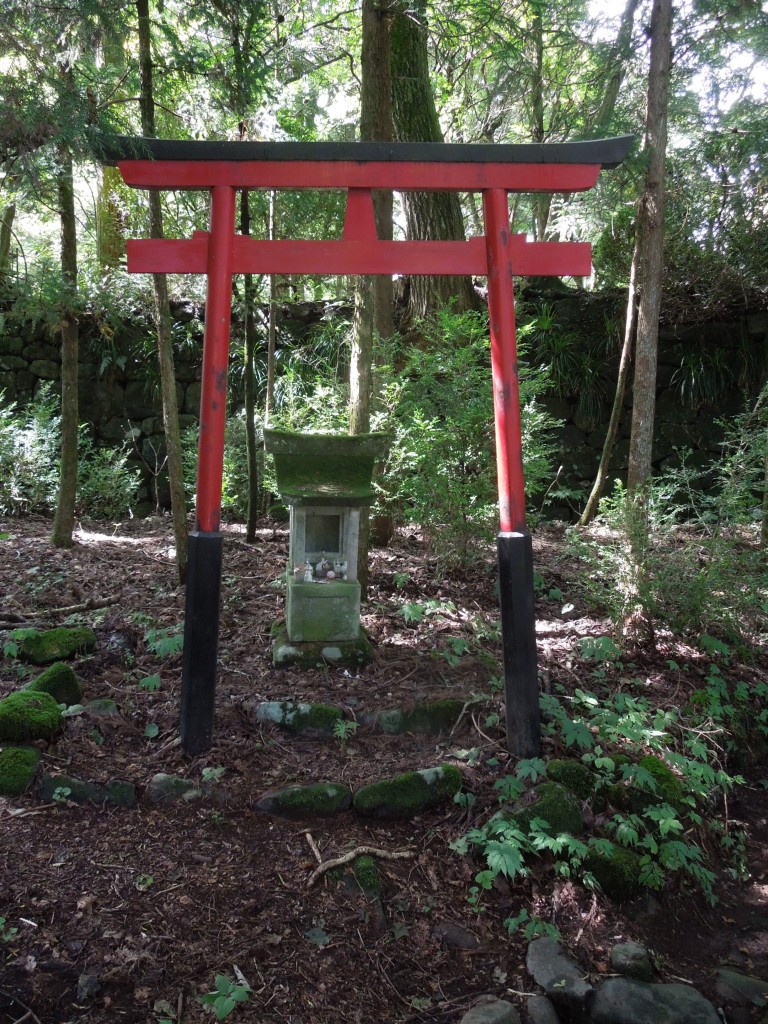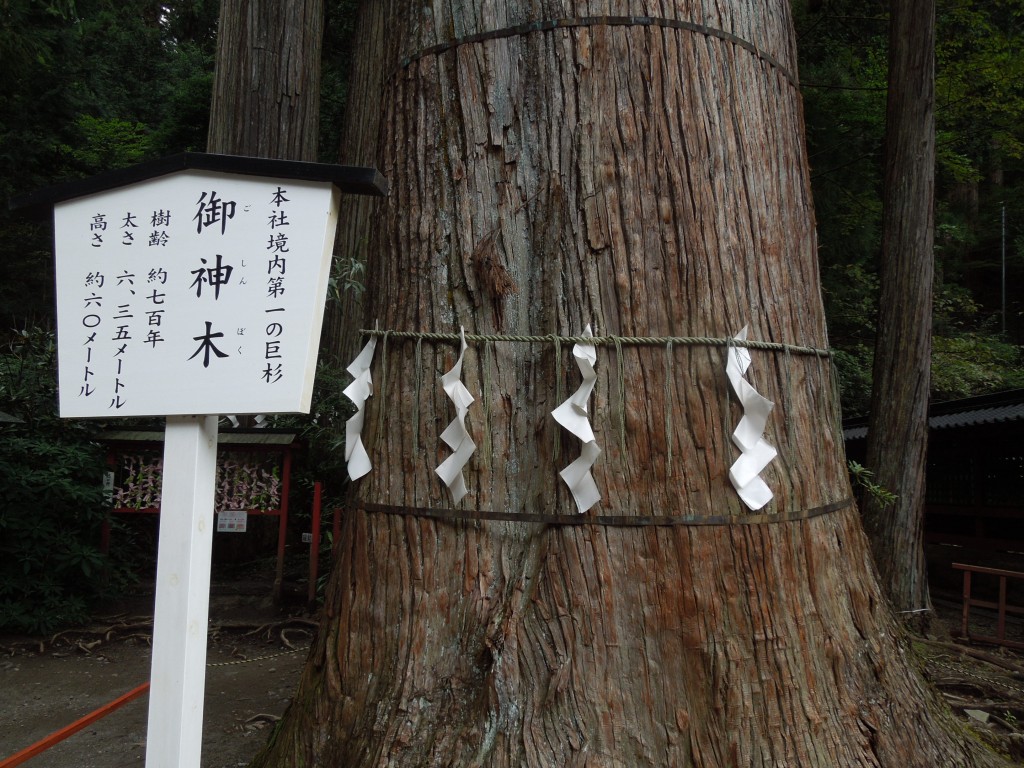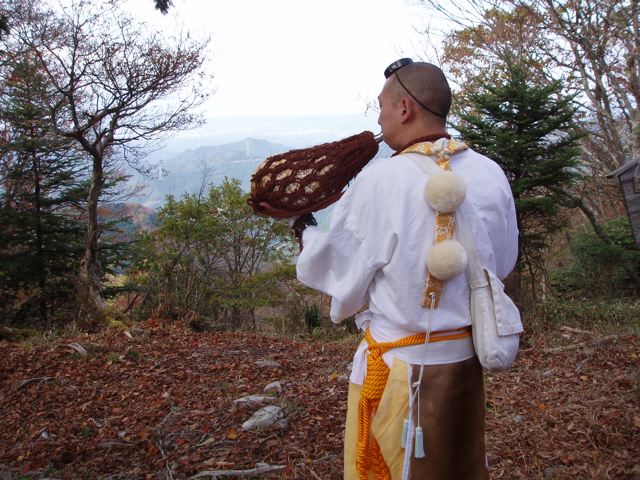In an essay on environmentalism in Shinto which has appeared recently on the academic.edu website, Green Shinto friend Aike Rots puts forward different ‘paradigms’ used in descriptions of Shinto. It should give pause to those who like to argue for some kind of ‘official’ version of Shinto. The fact is that there are competing versions.
In the first part of the extract below, Aike talks of the rift between the historical-constructivists and the essentialists. This might seem needlessly theoretical, but as Shinto spreads in the West the arguments between practitioners is becoming increasingly split between the two viewpoints. It’s as well to understand what exactly the differences rest upon.
In the second part, Aike writes of identifying ‘six postwar paradigms’, though reading through the passage below there appear to be only five. Perhaps if Aike reads this, he’d be good enough to write in and add to the following: 1) imperial Shinto; 2) ethnic religion; 3) local (folk) religion; 4) universalism; 5) the spiritual approach.
***************************************************

Some consider the kamidana an essential part of Shinto – yet the custom of household kamidana only dates back to the mid-Edo period.
In some ways, defining Shinto is even more difficult than defining Christianity, Islam or Buddhism. Those three religions all somehow trace their own history back to a legendary historical founder – Jesus, Muhammad or Gautama Buddha – and to the period in which this person lived. But when it comes to Shinto, there is very little consensus about when this religion started.
Famously, Shinto has no single founder, and it is not easy to trace it to one single period in history. Some argue that it is has existed since ‘time immemorial’; according to one of most famous and widely read English-language introductions (number one on the amazon.com list, in fact), it is the Japanese ‘native racial faith which arose in the mystic days of remote antiquity’ (Ono 1962, 1).
Among Shinto intellectuals, there is disagreement over the question whether the tradition goes back to the worship practices of hunter-gatherers in the Jōmon period (30,000-300 BCE) or to those of Yayoi-period rice farmers (300 BCE-300 CE). Many serious historians think the tradition was shaped much later, under the influence of Chinese ideology and rituals, and of Buddhism: in the Nara period (8th century), according to some; in the late-medieval period, according to others; or even in the 18th or 19th century, as a modern invented tradition (e.g., Kuroda 1981).
In any case, it is important to realise that there is a difference between two things. On the one hand, there is the historical reality of shrine worship, of the worship of local deities (kami) by means of ritual sacrifice and prayers (norito). These worship practices have always been characterised by great local diversity, constant change, and continuous interaction with Buddhism, Confucianism and Chinese cosmology and ritual.

Local, national, international? Some think kami only exist in Japan (kami no kuni). Originally they were localised, nameless and formless. Only later did they become personified as ancestral spirits.
On the other hand, there is the abstract concept ‘Shinto’, conceptualised as a single and singular tradition, which symbolically unifies the Japanese people as a nation and which is often seen as intimately connected with the imperial institution.
As my PhD supervisor Mark Teeuwen once wrote: Shinto ‘is not something that has “existed” in Japanese society in some concrete and definable form during different historical periods; rather, it appears as a conceptualization, an abstraction that has had to be produced actively every time it has been used’ (2002, 233). But this abstract concept has not always carried the same meaning, and it does not mean the same thing for different people.
There is not only the difference between the ‘insider’s view’, which holds that Shinto is the
indigenous worship tradition of the Japanese people; and the more critical ‘outsider’s view’, according
to which Shinto is an abstraction – and one that appeared fairly late in history. I call this latter approach the historical-constructivist approach.
Most historians today subscribe to this approach: they distinguish between the abstraction ‘Shinto’ on the one hand, and the historical diversity of kami worship on the other, and they deny that there is any transhistorical essence to Shinto (i.e., something that defines ‘Shintoness’). This is different from most insiders’ interpretations, and from most popular introductions to Shinto, which usually assert that Shinto is the indigenous religious tradition of Japan – singular, ancient, uniquely Japanese, and with an unchanging core essence. That is why I call these approaches ‘essentialist’.
But there are also significant differences between various insiders’ interpretations. In particular, they differ with regard to what it is that is considered Shinto’s core essence. In my dissertation, I have distinguished between six different paradigms, according to which Shinto has been conceptualised, defined and shaped in the course of modern history.
The first of these was dominant from the second half of the nineteenth century until the end of the Second World War, but it still lingers on. According to this view, Shinto is a national ritual cult focused on the worship of the divine ancestors of the imperial family; it was seen not as a religion defined by belief and personal membership, but as a collective Japanese, non-religious ritual tradition in which all citizens should take part. I have called this the ‘imperial paradigm’.

Back to nature. Shrines were a later invention after the spread of Buddhism. 'True Shinto' could be said to consist of outdoor worship.
After the Second World War, this imperial ritual and ideological system (which is often referred to as ‘State Shinto’) was dismantled; Shinto was subsequently established legally and politically as a religion. Accordingly, it was privatised, and it had to be redefined. According to the dominant post-war view, Shinto is the ancient, singular Way of ‘the’ Japanese people; it is an ethnic, racial faith, shared by all Japanese in the present and the past, by virtue of their nationality.
According to this view, Shinto encompasses the realm of religion, but it is much more than that: it is the essence of Japanese culture and mentality. As such, it is public and collective, not private or individual. Ono Sokyō, whom I quoted previously, is a representative of this paradigm. It has long been the view of many shrine priests. I call this the ‘ethnic paradigm’.
There are several alternative views, however. One of these is the ‘local paradigm’. It goes back to the work of the Japanese ethnologist Yanagita Kunio, who wrote most of his works before the war; in recent years, it seems to have acquired new popularity. Proponents of this paradigm challenge the focus on the imperial tradition, and of national unity, that characterises the other two.
According to them, the essence of Shinto cannot be found in powerful institutions; but, on the contrary, in local, rural worship traditions and beliefs, which have nearly disappeared. ‘Real Shinto’, according to them, can be found in the shamanistic and animistic traditions of the countryside – accordingly, they profess a nostalgic desire for a nearly-lost rural Japan, characterised by social harmony and harmony with nature.

Totoro, from the Miyazaki Hayao film – an exemplar of local folk Shinto? (courtesy fanpop.com)
This is the image of the popular film character Totoro, living in a grove near an old farmhouse, in a beautiful rural landscape (satoyama, as it is called in Japanese). In all these paradigms, Shinto is intimately connected with the land of Japan.
But there is an alternative paradigm, which has also been around since the pre-war period, and which I call the ‘universal paradigm’. According to this view, Shinto may have emerged in Japan, but it is essentially a salvation religion, which has the potential to reach out to – and maybe even save – the rest of the world. This view is characteristic of many membership-based groups, so-called new religious movements, which define themselves as Shinto. Yamakage Shinto is one of many examples.
There is some overlap with the fifth paradigm, which I call the ‘spiritual paradigm’. I think it is worth distinguishing between these two, as not all proponents of the spiritual paradigm have an international agenda; some are downright nationalist. Simply put, according to advocates of this view, Shinto is a religion without doctrine, a primordial worship tradition; it can only be truly grasped intuitively, by means of a mystical experience of the divine, not intellectually. Politics, theology, philosophy – it is all peripheral, according to this view.

Is Shinto a spiritual pursuit like Shugendo? Or is it rather a celebration of Japanese tradition?

Very interesting article, John.
As for the missing 6th paradigm I would like to suggest the “academic approach of shinto”. Although this approach results in useful categories, it has the inevitable flaw inherent to, let us say, the compartmentalization of water as the habitat of fish. The arguments easily overflow and mix and finally it will show another image of shinto that does not match reality.
After this academic preliminary I would like to come to my point and suggest an amendment, which I have to make as a representative of Yamakage Shinto. This type of shinto is mentioned in the article as an example of the “universal paradigm”, which the author combines in one breath with the word “salvation religion”, meaning that it “would reach out to save the rest of the world”. I am inclined to say that this does not match reality and you may judge for your self by listening to an interview with Yamakage or by reading the seminal article “Don’t propagate shinto”, by Yamakage.
Links are here below.
http://www.shinto.nl/erica_meets_yamakage.htm
http://www.shinto.nl/index_htm_files/Please_do_not_propagate_shinto.pdf
The message of Yamakage Shinto is very simple:
1. we do not need salvation
2. we must try hard to live in a pure world by cleaning body and mind.
This is as universal as the statement that fish die in polluted water.
I wish you all a bright clean day.
Paul de Leeuw
Hello Paul, and thank you for that helpful input…
The two links were useful, though unfortunately the first one is mainly in Dutch which is limiting, though the link to the French film is very helpful. There are two points of interest to me. One is the sword cutting as a form of purification, and the other is the fire festival and hand gestures (mudra). I presume these have been incorporated from Shingon Buddhism?
The passage in English from Yamakage Motohisa was also illuminating, and I would like to quote from it in a further Green Shinto post with your permission. Apart from the book The Essence of Shinto, there is a great shortage of material about Yamakage Shinto in terms of its history, beliefs and sectarian nature (it’s not a member of Jinja Honcho, for instance). I notice even your own website (http://www.shinto.nl/index.htm) does not carry such information, but more general material about Shinto.
I’m sure Green Shinto readers would be grateful for links to explore or for any further explanations about the nature of Yamakage Shinto as opposed to mainstream shrine Shinto. Please feel free to use this website for such a purpose should you so wish.
Hello John, being quite busy I had no opportunity to reply earlier. Thanks for your comment and your generous offer to give me a platform. As for the video clip, I am sorry there is only Dutch version. We will work on English subtitles, like we did with the French video, which was made by Jean Herbert and Michel Random about 50 years ago.
Indeed, Yamakage Shinto has absorbed many elements from Shingon, Tao and Ekikyo and was therefore cut off from mainstream shinto in Meiji period. Even now some spokesmen for Jinja shinto say that Yamakage Shinto is not shinto. It is interesting to notice that Yamakage Shinto does not say that Jinja shinto is not shinto.
As for the history of Yamakage Shinto, it is quite complicated and reflects some trials and tribulations in Japanese history. Some glimpses are given in Shinto no Shinpi, which is already translated into English, French and Portuguese [The Essence of Shinto]. More of the history is given in a later book Shinto no Ikikata, which is now in the process of being translated into English. Moreover, I am writing a book (in Dutch), which will cover the history and syncretism of Yamakage Shinto; when it is finished, I will send an abstract in English.
In this way I hope to make clear the position of Yamakage Shinto, which in my opinion is not “sectarian”, but “dissected”.
Thank you for the information, Paul, and I look forward to learning more about the ‘dissected’ nature of Yamakage…
Thank-you John and Aike for this contribution. It provides much food for thought. I have downloaded the paper from academia.edu and will read it with interest. Now I know why Totoro has such appeal! I have a plush toy version sitting on the chair in my bedroom, as well as some hand-painted glass jewellery with his image on it from Studio Ghibli. The Studio makes such wonderful movies, including many references to Shinto in various guises.
Thanks, Jann, for the feedback and it’s certainly true about the Studio Ghibli films and their Shinto content. I went to a talk once by Kamata Toji (now at Kyoto University) and he used Princess Mononoke to illustrate points he was making about early Shinto. The Shinto perspectives of Spirited Away are examined in a piece by academics here: http://www.unomaha.edu/jrf/Vol8No2/boydShinto.htm. There’s also an interesting item here about Shinto and environmentalism in Miyazaki Hayao’s work – http://environment-ecology.com/religion-and-ecology/511-miyazaki-shintoism-a-ecology-.html
Looking at the original article on academia.edu, the sixth paradigm is, er, “Green Shinto”. (Page 8)
In that connection, it is worth mentioning the “Everyone’s Chinju no Mori” program that the Foundation for the Promotion of Japanese Culture (which is headed by the president of Jinja Honcho, I believe ex officio) is running with the cooperation of Jinja Honcho and the Nippon Foundation. This program is, with the advice of a professor with years of experience in reforestation projects, replanting chinju no mori that were destroyed in the Great East Japan Earthquake. They started soon after the tsunami, and I finally managed to attend one of the replanting projects a couple of months ago. (Naturally, they are not in the most accessible locations.) Professor Miyawaki emphasised the importance of choosing trees that were appropriate to the site and local environment, and explained what we would be planting. Tsunekiyo Tanaka (the current president of Jinja Honcho) has attended all of the replanting events, and he stays for the whole event, planting trees. It is clearly something that he thinks is very important. (He also, incidentally, emphasises the importance of links to Buddhism, which is to be expected from the chief priest of Iwashimizu Hachimangu.)
Hah, that’s very funny and thanks for pointing out the irony David… Also it’s very good to hear of the replanting programme, and in particular that the trees are being carefully chosen presumably with the intention of rebuilding the type of mixed forest that Japan cannot afford to lose.
Dear John,
Thank you very much for linking to my essay, posting this extract, and adding some nice pictures. First, let me point out that this is the text of a lecture I gave some time ago, in which I summarised some of the findings of my PhD research. Those who want to read more about these different paradigms can have a look at my PhD dissertation (chapter 5, in particular), which is now accessible online at http://urn.nb.no/URN:NBN:no-44540.
In response to your question: as suggested later in the essay, the sixth and most recent paradigm, which has achieved paradigmatic status (i.e., it has strongly affected Shinto self-definitions, and has now been appropriated by the mainstream shrine establishment) in the last ten to twenty years, is what I refer to as the ‘Shinto environmentalist paradigm’. It draws on the other paradigms, integrating aspects of earlier conceptualisations into a newly developed framework of Shinto as, essentially, a nature religion that is said to contain (ancient) ecological knowledge and ethics which may serve to overcome today’s environmental (and other?) problems. Your blog is illustrative of this development, as are the various chinju no mori preservation/reconstruction projects carried out at shrines throughout the country (such as the one mentioned by David).
It would be possible to view the historical-constructivist approach as a seventh paradigm. The difference is, however, that the other six all constitute frameworks for defining and conceptualising Shinto (i.e., providing answers to the question “what is Shinto”), whereas the historical-constructivist approach denies the existence of a core essence to Shinto, recognising that all definitions and practices are themselves the product of historical circumstances, and are contingent and ideologically embedded. This is the approach of scholars such as Kuroda, Teeuwen, Breen, Rambelli, Thal and others (including myself, although I have a slightly different disciplinary approach from these historians, combining discourse analysis with anthropological methods). Scholars adhering to this approach typically refrain from defining Shinto, instead studying definitions created by others and placing them in their historical context.
Paul: thank you very much for pointing out that Yamakage Shinto states that “we do not need salvation”. At the same time, it does have a universalistic attitude – quite different from Jinja Honcho, for example – and suggests that Shinto’s significance extends beyond the Japanese nation. In the preface to “The Essence of Shinto”, Yamakage writes that “we can find in Shinto a universal meaning and a practical ethos for today’s world” and that “its essence is valid for all of humanity and very relevant to us in our predicament” (p. 15). While perhaps not about “salvation” in a theological sense, it does suggest that Shinto can play a role in saving the world from environmental degradation. As such, I think it does have a soteriological element; it certainly has a universalistic attitude. In any case, I would be happy to learn more about Yamakage Shinto and its relation to ‘mainstream’ Shinto, so I look forward to reading your book.
All the best,
Aike